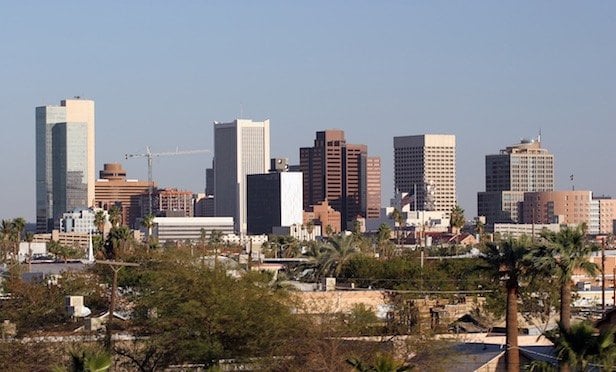 Phoenix is setting up for a record holiday shopping season. The market has seen strong economic and population growth this year—a winning combination for all asset classes—but holiday shopping growth has a different set of drivers. Ecommerce, pop-up shops and the resale trend are all equaling a winning combination for holiday spending numbers.
Phoenix is setting up for a record holiday shopping season. The market has seen strong economic and population growth this year—a winning combination for all asset classes—but holiday shopping growth has a different set of drivers. Ecommerce, pop-up shops and the resale trend are all equaling a winning combination for holiday spending numbers.
"While mall owners and retailers are still analyzing their sales data, it appears that Phoenix fell in line with the national trend of increased sales from Thanksgiving to Cyber Monday," Todd Folger, first VP at CBRE, tells GlobeSt.com. "Nearly 190 million people shopped during that five-day period compared to 166 million in 2018."
The shopping season only just started, but the numbers already point to a strong year for Phoenix in particular. "In-store sales won't be reported until after the holiday season but thus far, NRF reports that 124 million consumers shopped in-store; 142 million shopped online, and 75.7 million did both over the Thanksgiving weekend."
Ecommerce, of course, is driving activity, but pop-up shops have been integral to driving retail spending in the market. "Pop up shops are a very economical way for existing retailers or online retailers to get their product in front of consumers they may not yet have reached," says Folger. "This delivery also allows the retailer to experiment and engage customers in a more direct fashion. An online purchase is very transactional and while online sales continue to rise, retailers understand now more than ever that consumers crave experiences—and experience that stimulates your senses and that is best executed in a physical store experience."
Nationally, the holiday shopping season is also off to a good start, but there is some concern about how the shortened season might impact spending. Folger, however, isn't concerned. "I really don't see the shorter shopping period season impacting holiday sales this year," he says. "Most consumers plan with a budget for holiday shopping. So, whether they have 26 or 31 days to shop, they are likely to still spend the same amount."
© Touchpoint Markets, All Rights Reserved. Request academic re-use from www.copyright.com. All other uses, submit a request to [email protected]. For more inforrmation visit Asset & Logo Licensing.






